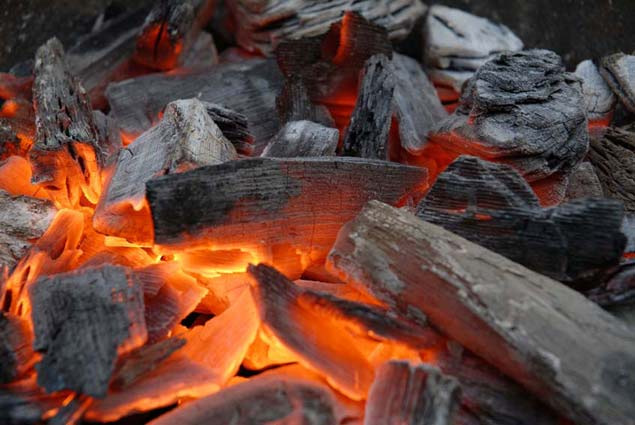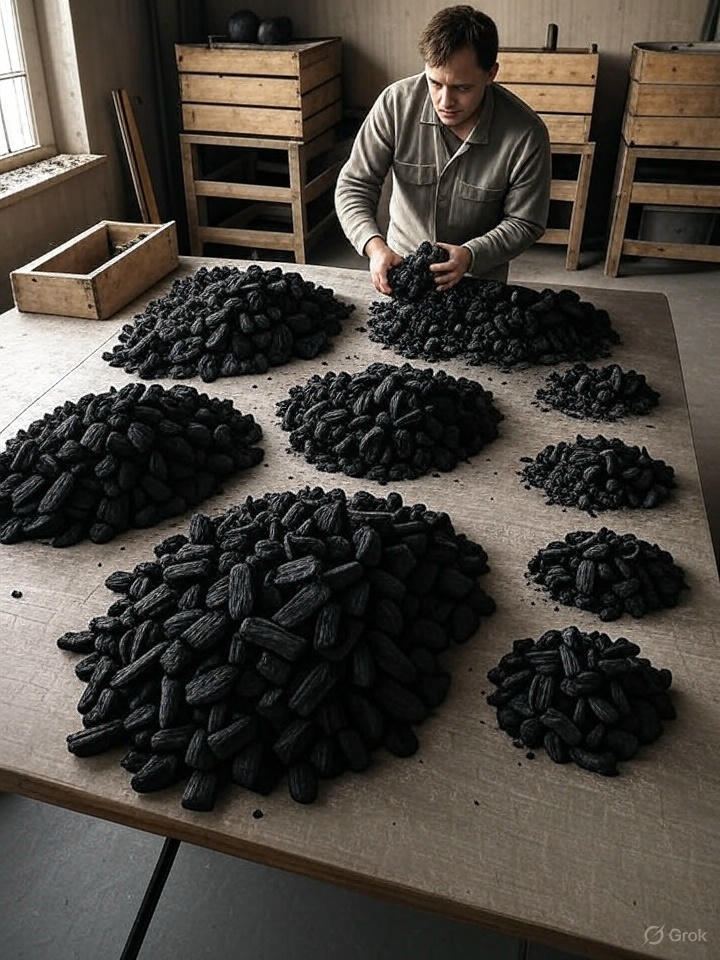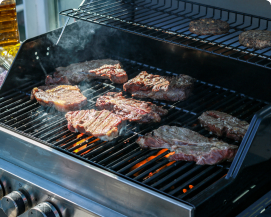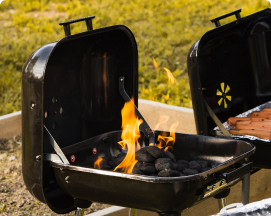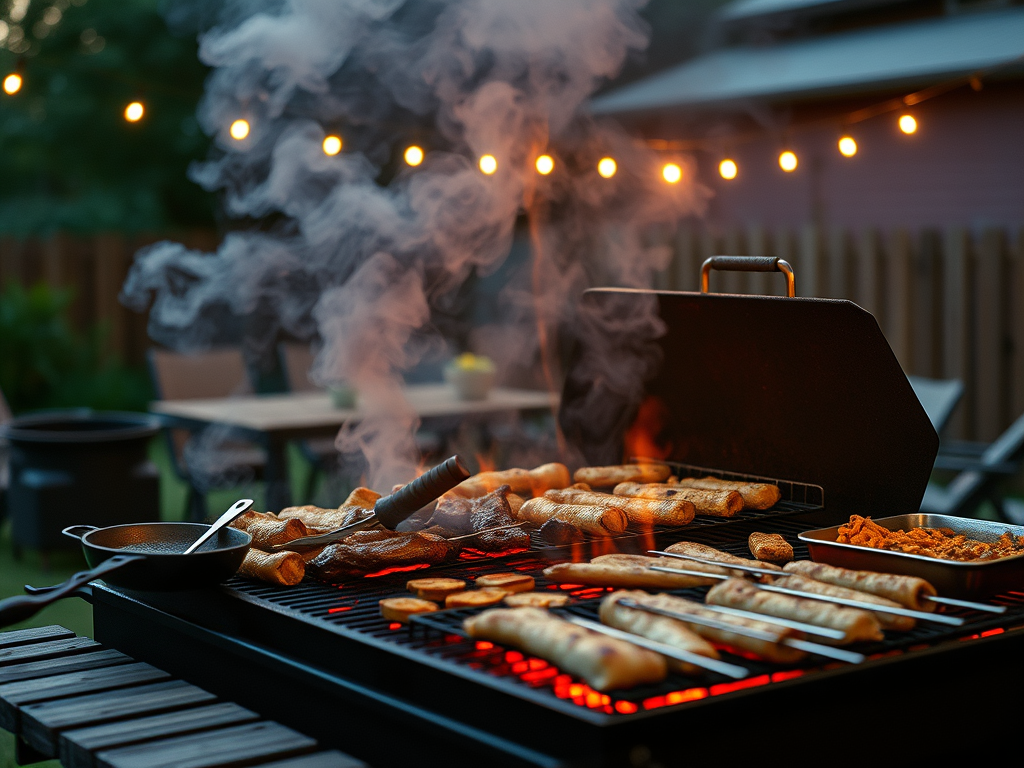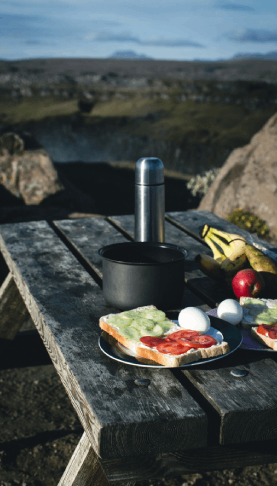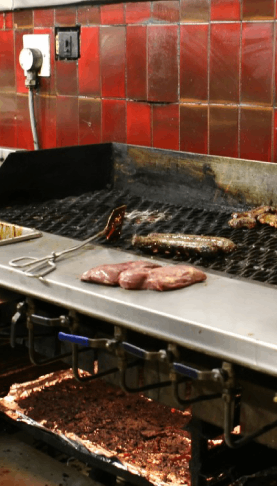Cooking with charcoal and wood in a pizza oven is a fantastic way to achieve authentic, smoky flavors and high heat for crispy, well-cooked pizzas. Here’s a concise guide to get you started, based on best practices for using a wood-fired or charcoal pizza oven(we like both!}:
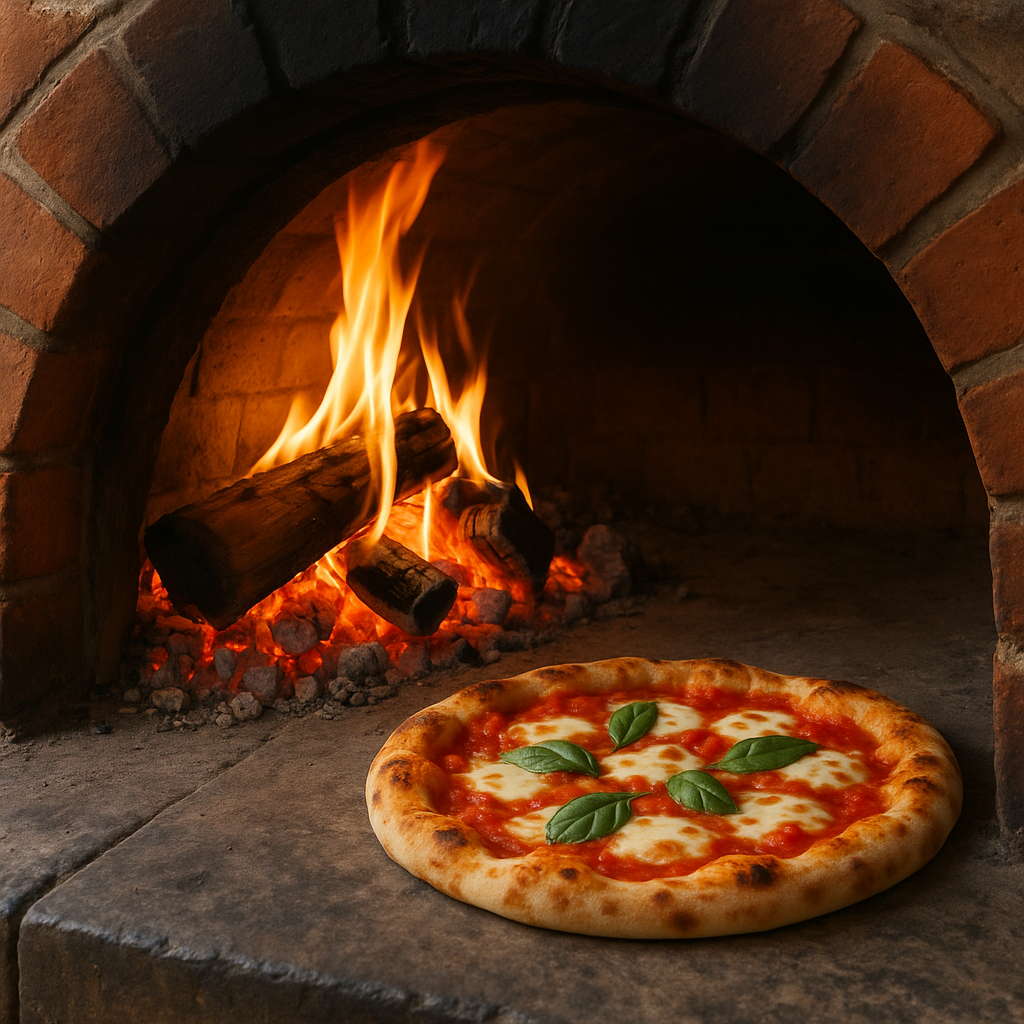
1. Choosing Fuel
- Wood: Use seasoned, dry hardwood (oak, maple, or fruitwoods like apple or cherry) for a clean burn and great flavor. Avoid softwoods (pine) or green wood, as they create too much smoke and creosote. Kiln-dried wood with less than 20% moisture is ideal.
- Charcoal: Lump charcoal burns hotter and cleaner than briquettes. It’s great for consistent heat and can be combined with wood for flavor. Avoid briquettes with additives, as they can impart off-flavors. Instead buy BBQDaddy Pizzaiolo Blend. 100% White Quebracho Lump Charcoal with a blend of seasoned dry hardwoods.
- Combination: Many pizza oven users start with charcoal for a stable base heat and add wood for flavor and to maintain high temperatures.
2. Setting Up the Fire
- Equipment: You’ll need a pizza oven (e.g., Ooni, Gozney, or a traditional dome oven), fire starters (natural, no chemical lighter fluids), a chimney starter (optional for charcoal), and oven-safe gloves.
- Fire Placement:
- In most pizza ovens, place the fire at the back or side to allow heat to circulate and create a hot spot on the oven floor for cooking.
- For dome ovens, center the fire initially to heat the dome, then push it to the side or back once the oven is hot.
- Lighting the Fire:
- Stack charcoal in the oven or use a chimney starter to get it glowing.
- Add small pieces of kindling wood or a natural fire starter and light it.
- Gradually add larger wood pieces as the fire grows. Keep the oven door slightly open or vents adjusted to ensure good airflow.
3. Heating the Oven
- Target Temperature: Aim for 700–900°F (370–480°C) for Neapolitan-style pizza, which cooks in 60–90 seconds. For other styles, 500–700°F (260–370°C) works.
- Heating Time: Depending on the oven (portable like Ooni or masonry), it takes 30–60 minutes to reach pizza-cooking temperatures. Check the oven floor with an infrared thermometer to ensure it’s hot enough (at least 650°F/340°C).
- Fire Management:
- Maintain a rolling flame (small, steady flames) by adding small wood pieces every 10–15 minutes.
- Spread charcoal evenly for consistent heat, and avoid overloading to prevent excessive smoke.
4. Cooking the Pizza
- Preparation:
- Use a pizza peel (wooden for launching, metal for retrieving) dusted with flour or cornmeal to prevent sticking.
- Keep dough thin (1/8–1/4 inch for Neapolitan) and toppings light to ensure even cooking.
- Cooking Process:
- Slide the pizza onto the hot oven floor, near but not directly in the flame.
- Rotate the pizza every 20–30 seconds using a peel to ensure even cooking, as the side closer to the fire cooks faster.
- Watch for a charred, leopard-spotted crust (for Neapolitan) or golden-brown crust (for other styles). Cooking typically takes 1–3 minutes at high heat or 8–12 minutes at lower temperatures.
- Tips:
- If the bottom cooks too fast, raise the pizza slightly by placing it on a wire rack or perforated pan inside the oven.
- Keep the oven door closed as much as possible to retain heat, opening only to rotate or remove the pizza.
5. Safety and Maintenance
- Safety:
- Use heat-resistant gloves and keep a fire extinguisher nearby.
- Ensure proper ventilation, especially for indoor or semi-outdoor ovens, to avoid carbon monoxide buildup.
- Never leave the fire unattended, and fully extinguish it after use.
- Cleaning:
- Let the oven cool completely, then sweep out ash with a metal brush or scraper.
- For masonry ovens, burn off food residue with a hot fire periodically to keep the cooking surface clean.
- Store charcoal and wood in a dry place to prevent moisture absorption.
6. Tips for Success
Control Heat: Add charcoal for steady heat and wood for bursts of flame. Use less fuel for lower-temperature dishes like flatbreads or roasted vegetables.
- Practice: Mastering fire control and pizza rotation takes time. Start with simple recipes to get a feel for your oven’s hot spots.
- Fuel Ratio: A common approach is 70% charcoal for consistent heat and 30% wood for flavor, adjusting as needed.
Additional Notes
- Oven Types: Portable ovens (Ooni, Roccbox) heat faster but have smaller cooking surfaces, while masonry ovens retain heat longer for multiple pizzas or dishes.
- Other Dishes: Beyond pizza, use the oven for searing steaks, roasting vegetables, or baking bread by adjusting fire size and placement.
- Troubleshooting:
- Too much smoke? Use drier wood or improve airflow.
- Uneven cooking? Rotate more frequently or adjust fire placement.
- Pizza sticking? Ensure the peel and oven floor are well-dusted and dry.
What Else Can You Cook In A Pizza Oven?
A pizza oven, especially one fueled by charcoal and wood, is incredibly versatile due to its high heat and smoky flavor. Beyond pizza, you can cook a wide range of dishes by leveraging the oven’s radiant heat, convection, and direct flame. Here’s a concise list of what you can cook, along with tips for each:
1. Breads and Flatbreads
- Types: Sourdough, focaccia, naan, pita, or dinner rolls.
- How to Cook:
- Use a slightly lower temperature (500–700°F/260–370°C) than for pizza to avoid burning.
- Place dough directly on the oven floor or in a cast-iron skillet for even baking.
- For flatbreads, cook 5–10 minutes, flipping as needed for a charred, puffed crust.
- Tip: Brush with olive oil and herbs before baking for extra flavor. Add small wood pieces for a smoky taste.
2. Meats
- Types: Steaks, chops, sausages, burgers, chicken wings, or whole roasts (e.g., pork shoulder, lamb leg).
- How to Cook:
- Sear at high heat (700–800°F/370–425°C) near the flame for 1–3 minutes per side for steaks or chops to get a charred crust.
- For larger cuts, use residual heat (400–600°F/200–315°C) in a cast-iron pan or roasting tray, cooking 20–60 minutes depending on size.
- Skewer smaller pieces (e.g., kebabs) and rotate near the fire for even cooking.
- Tip: Let meats rest after cooking to retain juices. Use charcoal for steady heat and wood for smoky flavor.
3. Seafood
- Types: Whole fish (e.g., branzino, snapper), shrimp, scallops, or lobster tails.
- How to Cook:
- Cook at 600–750°F (315–400°C) for a quick sear and tender interior.
- Place whole fish or shellfish in a grill basket or cast-iron skillet to prevent sticking, cooking 5–15 minutes depending on size.
- Add lemon slices or herbs for flavor during cooking.
- Tip: Brush with oil to avoid drying out. Use fruitwood (e.g., apple) for a subtle, sweet smokiness.
4. Vegetables
- Types: Peppers, zucchini, eggplant, mushrooms, corn on the cob, or root vegetables (potatoes, carrots).
- How to Cook:
- Roast at 500–700°F (260–370°C) in a cast-iron skillet or directly on the oven floor for 10–20 minutes.
- Toss with olive oil, salt, and herbs before roasting to enhance flavor.
- For charred veggies, place closer to the flame and turn frequently.
- Tip: Cut vegetables uniformly for even cooking. Use a perforated pan for smaller pieces to avoid falling through grates.
5. Casseroles and Baked Dishes
- Types: Lasagna, mac and cheese, gratins, or baked beans.
- How to Cook:
- Use a cast-iron or oven-safe ceramic dish at 400–600°F (200–315°C).
- Cook 20–40 minutes, covering with foil initially to prevent burning, then uncover for a crispy top.
- Tip: Place farther from the flame to avoid scorching. Add a small wood piece for a smoky undertone.
6. Desserts
- Types: Fruit cobblers, skillet cookies, roasted fruit (peaches, pineapple), or s’mores.
- How to Cook:
- Use lower heat (350–500°F/175–260°C) in a cast-iron skillet or baking dish.
- Roast fruit directly on the oven floor for 5–10 minutes or bake desserts for 15–30 minutes.
- For s’mores, toast marshmallows near the flame for 1–2 minutes.
- Tip: Add cinnamon or brown sugar to fruit for caramelization. Use a metal peel to handle delicate desserts.
7. Other Dishes
- Skillet Dishes: Stir-fries, paellas, or frittatas in a cast-iron pan at 500–700°F (260–370°C) for 10–20 minutes.
- Grilled Cheeses or Paninis: Cook on a skillet or directly on the oven floor for 3–5 minutes, flipping halfway.
- Smoked Foods: Use lower heat (300–400°F/150–200°C) with wood only to smoke cheese, nuts, or small cuts of meat for 20–60 minutes.
General Tips for Cooking Non-Pizza Dishes
- Temperature Control: Adjust heat by adding or reducing fuel. Charcoal provides steady heat, while wood boosts flames for searing or charring.
- Cookware: Cast-iron skillets, grill baskets, or ceramic dishes are ideal for retaining heat and preventing sticking.
- Fire Placement: Keep the fire to one side or the back for indirect heat cooking, or spread it out for roasting.
- Timing: High heat means faster cooking, so monitor closely and rotate food to avoid burning.
- Fuel Choice: Fruitwoods (apple, cherry) pair well with seafood and desserts, while hardwoods (oak, hickory) suit meats and hearty vegetables.
Considerations
- Oven Type: Portable ovens (e.g., Ooni, Gozney) are great for small, quick dishes, while masonry ovens excel for large roasts or multiple dishes due to retained heat.
- Space Limitations: Smaller ovens may limit cookware size, so choose appropriately sized pans or cook in batches.
- Experimentation: Test recipes in small portions to learn how your oven’s heat zones work.
